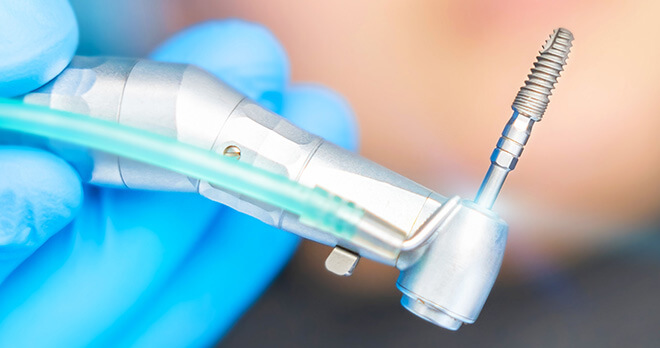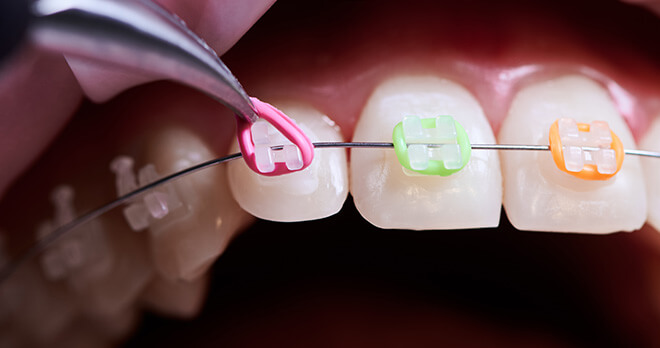What you need to know about negligent root canal treatment
For whatever reason you required your root canal treatment, you would hope that when visiting a dentist they fix the issue rather than making it worse. Here we explain what you need to know when it comes to negligence and root canal treatment.
- What should happen during root canal treatment
- Potential complications
- What to expect following a root canal
- Are failures negligent?
- Sodium hypochlorite spills
- When treatment fails
- Prevention
- Making a claim
You may have required root canal treatment for a number of reasons, including tooth decay, a cracked tooth, a broken crown, cracked or loose fillings, or even an injury, such as a blow to your mouth.
If you developed a pulp infection (an infection in the centre of your tooth), you are likely to have experienced pain. Initially, as the infection progresses, these symptoms can disappear as the pulp dies and the infection spreads through the root canal system where your dental pulp travels down below the gum line.
Once below the gum line you will then likely experienced further symptoms such as pain, swelling and pus from the gum near the affected tooth. Your tooth may even have become darker in colour than your other teeth, which means that the nerve inside your tooth is dead or dying.
It is very important that you see your dentist if you develop an infection, as the pulp will not heal by itself and leaving the infected tooth in your mouth may make it worse. Eventually, the tooth will become loose and need extracting. The aim of root canal treatment is to prevent your tooth from being taken out by removing the damaged pulp and treating the infection.
Without treatment, the infection may spread further into your jawbone and you may need to have your tooth removed.
What should happen during root canal treatment
A dentist or endodontist can perform root canal treatment. An endodontist is a dentist who specialises in the causes, diagnosis, prevention and treatment of diseases and injuries of dental pulp or the nerve of the tooth. If your dentist suspects your root canal treatment may be more difficult or complicated, they may suggest a referral to an endodontist.
Most root canals can be done in one to two appointments. However if there are curved canals, multi-canals, or large infections, this could take one or two additional appointments.
The first appointment is the procedure itself when the infected pulp is removed. The second (and maybe third) appointment is when the root canal gets cleaned and filled with a crown or other filling to prevent infections. Each appointment lasts roughly 90 minutes each.
Before the treatment
Before having root canal treatment, you’ll usually be given a local anaesthetic, which means the procedure should be painless and no more unpleasant than having a filling. Thereafter the dentist should take an x-ray to ascertain the shape of the root canals, and determine if there is any infection in the surrounding bone. This can also help to show which tooth is causing your pain and needs treatment, and how far any infection has spread. These examinations are necessary for your dentist to make sure that the tooth is not too badly damaged for root canal treatment.
During the treatment
During the treatment, the dental practitioner will remove the nerve and pulp from the tooth using a drill, and thereafter clean the area using water or sodium hypochlorite to irrigate and disinfect the inside of the tooth. The irrigating liquid makes sure that all infected material is flushed out.
Once the tooth is cleaned, it will be sealed. Some dentists will wait a week or so before sealing the tooth, and if this is the case, a temporary filling will be placed. You then have a second appointment to have the tooth permanently filled.
At the next appointment, to fill the interior of the tooth, a sealer paste and rubber compound called gutta percha will be placed into the root canal. If your tooth is badly worn or is at risk of further damage, your dentist may suggest having a crown fitted. This is an artificial cap that fits over your tooth. You’re more likely to need a crown if you’re having one of your back teeth treated, because these are used for chewing.
In some cases extraction may be required, however this should only be as a last resort. Some patients opt for extraction if the tooth cannot be restored, for example, if there is large decay or trauma. However, removing a tooth may mean that the surrounding teeth start to move and become crooked.
Rubber dams
A rubber dam should always be used when carrying out this treatment, to protect you from infection when receiving dental treatment.
A rubber dam, also known as a dental dam, is a thin square sheet used to isolate the operative site from the rest of the mouth. Dental rubber dams contain a hole in the middle that allows the dentist to isolate the treatment area using a dental clamp around the tooth.
Assuming the treatment is carried out to a satisfactory standard, root canal treatment is usually successful, and in about 9 out of 10 cases a tooth can survive for up to 10 years after root canal treatment.
Complications
Whilst most root canal treatment is successful, sometimes further problems can occur, including damage to the root canal or the tissue surrounding the tooth, infection or damage to the nerves around the tooth.
If your root canal treatment doesn’t work, you may be advised to have more treatment. This is called re-treatment. You might also need re-treatment if your symptoms return years after you’ve had root canal.
What should I expect following root canal treatment?
After your final treatment, your restored tooth should no longer be painful, although it may feel sensitive for a few days. You may have some slight tenderness around the tooth that has been treated, but usually this lasts for only a short time. The area around your tooth may also be swollen and bruised. This should get better within two weeks of your treatment. It’s important to look after your teeth when recovering from root canal treatment and you should avoid biting on hard foods until your treatment is complete.
You can take over-the-counter painkillers, such as paracetamol or ibuprofen, to relieve any discomfort. If you have severe pain or any pain or discomfort that gets worse, you should return to your dentist. Your dentist may ask you to have further X-rays and check-ups to make sure that the tooth is secure and you’re healing well.
After your treatment, it’s important to take care of your repaired tooth by brushing regularly, not smoking and limiting sugary food and drinks.
Why does treatment fail and is failure of treatment negligent?
As with any procedure, complications can occur and root canal treatment can fail for non negligent reasons.
Unfortunately, despite a dentist’s best efforts they sometimes do fail, particularly if the tooth was badly decayed in the first place. However, claims generally arise out of negligent root canal treatment, for the following reasons:
- During the procedure, the root of the tooth may crack, or the instruments can break in the canal or perforate the canal. If the tip of a file is retained in or around the treated tooth. Whilst this by itself may not be negligent, it is negligent if the dentist who carried out the root canal treatment fails to inform you about the retained file at the time of treatment
- If there is a failure to fill the canals of the tooth completely, which generally occurs when a dentist fails to accurately record the lengths of the canals prior to treatment. The dentist must also make sure the filling material goes far enough into the canal, to fill it up. If the root canal is not properly sealed, the infection could return.
- If there is a failure to use a rubber dam, which has allowed bacteria to seep into the treated tooth and cause infection which can result in the root canal treatment failing.
- If a perforation of the tooth has occurred after a dentist has over filled a root canal, which can lead to nerve damage. Perforations need to be repaired as soon as possible, to prevent bone loss occurring.
My dentist spilt sodium hypochlorite in my mouth or down my throat. Is this negligent?
Sodium hypochlorite is a bleaching agent commonly used during root canal treatment to clean the canals and pulp chamber of a tooth to dissolve any bacteria present.
In order to prevent a sodium hypochlorite spillage during root canal treatment, a dentist should use a rubber dam, which is essentially a thin piece of rubber that isolates the tooth that is being treated.
Expert evidence suggests that a rubber dam should be used at every stage of root canal treatment, and one must always be used during the second stage. If you have suffered an injury resulting from a sodium hypochlorite spillage during root canal treatment (this can include burns or even nerve injury), this is likely a result of negligence, particularly if a rubber dam has not been used.
What happens if the treatment fails?
Sometimes, damaged teeth can’t be repaired with root canal treatment. This is usually if your tooth is badly damaged or if you have severe gum disease which prevents your tooth from healing or being well supported after treatment.
If your tooth can’t be repaired, it will need to be extracted and would usually be replaced with an implant.
Prevention
In most cases it’s possible to prevent the need for further root canal treatment by keeping your teeth clean, not eating too much sugary food and giving up smoking (if you smoke).
To prevent infections, tooth decay, and gum disease, dentists recommend brushing teeth twice each day, using toothpaste that contains fluoride, using a suitable toothbrush and replacing it regularly, attending regular dental check-ups and cleanings, flossing to clean between the teeth and prevent the build-up of plaque, avoiding sugary drinks and foods, and following a healthy diet.
What information do I need to bring a claim for negligence? What’s the process?
Our team has put together a guide on the process of making a dental negligence claim here.
Got a question?
You can call the team on 0800 923 2080 or message them to understand more about you potential compensation claim for dental negligence. We will get back to you at a time that is convenient to you.
Common claim types
Insights and opinions
View more articles related to Cosmetic dentistry, Crowns and bridges, Dental implants, Dental nerve damage, Extractions, Gum disease, Information, Mouth cancer, Orthodontics, Root canal treatment, Tooth decay and Wisdom teeth










